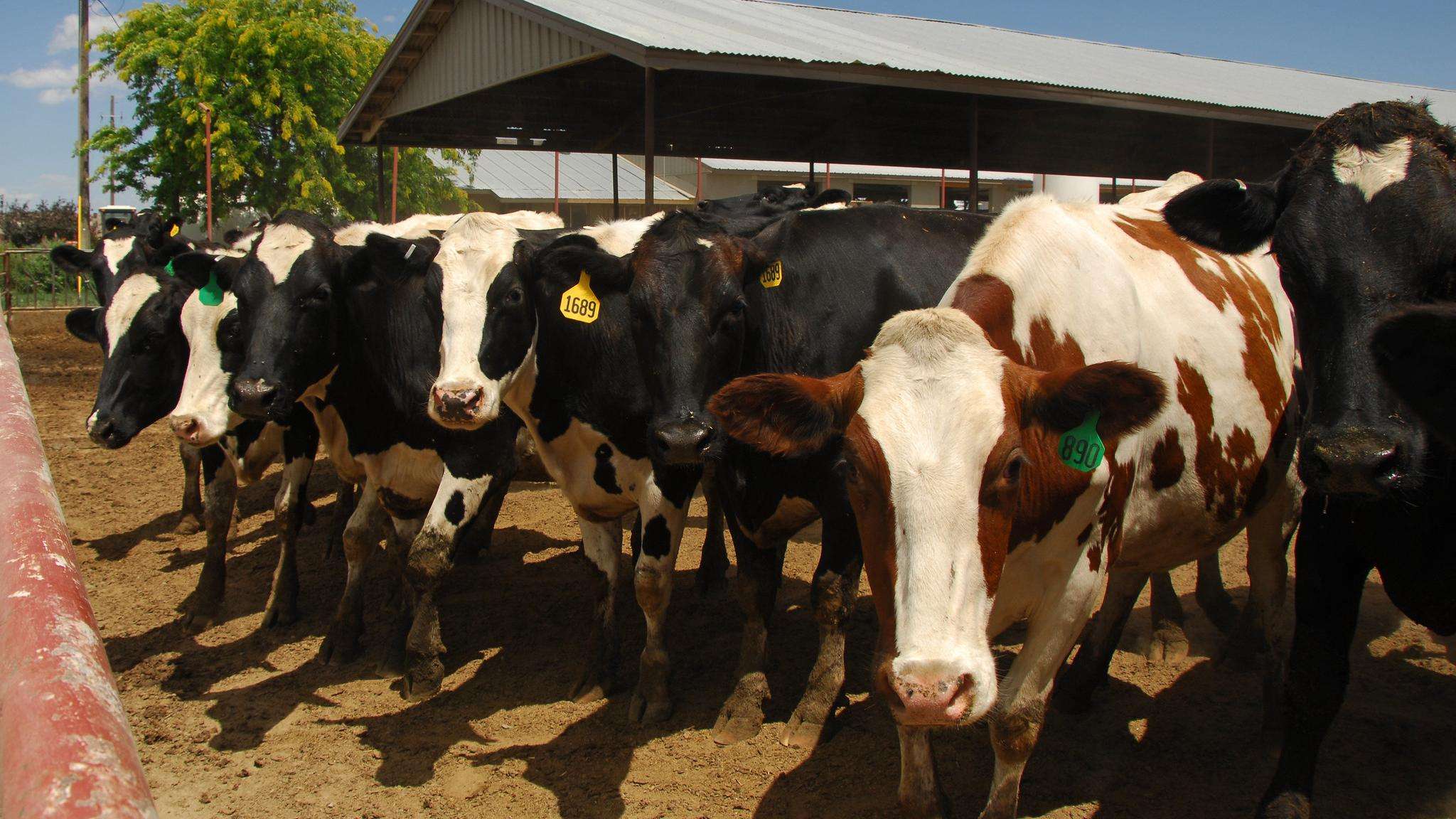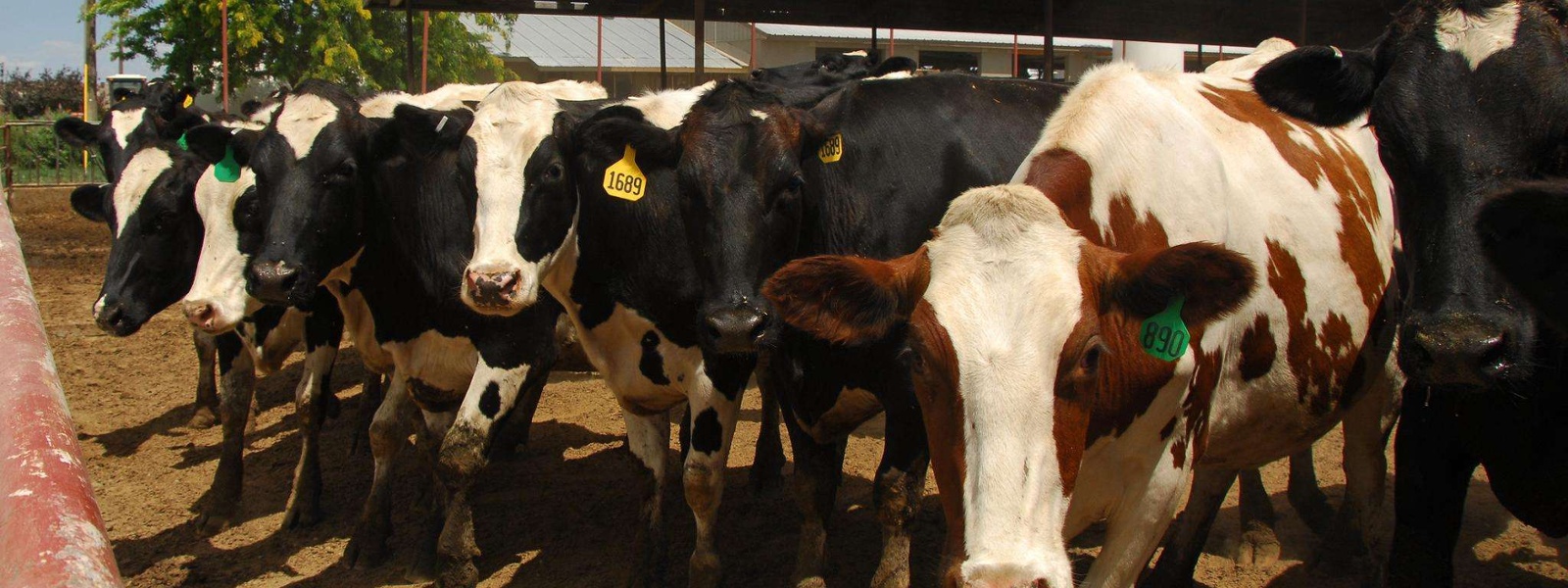Avian flu in dairy cows puts focus on cattle movement


By Ching Lee
With an outbreak of highly pathogenic avian influenza affecting dairy cows in six states, the California Department of Food and Agriculture has implemented import restrictions on cattle from premises with confirmed or suspected cases of the disease.
The move comes as agricultural officials acknowledge the H5N1 virus has spread between cows. This has prompted calls to minimize dairy cattle movement.
Previously, it was thought that transmission was from infected wild migratory birds, which shed the virus through their feces, saliva and other secretions. It is suspected that the dairy cows initially caught the virus after consuming contaminated food or water. It is now believed that infected cows could pass the virus to other cows, as some affected states had received cattle from an affected dairy in Texas.
California’s new import requirements are “an attempt to mitigate potential transmission from affected premises and dairy cattle to susceptible livestock in California,” according to the state order, which took effect April 4.
To enter California, dairy cattle from states that have H5N1-infected cattle must be inspected by a veterinarian within seven days of shipment. A certificate of veterinary inspection must accompany the cattle saying they do not come from a premise that has infected cattle or is being investigated for H5N1 infection.
Other states, including Alabama, Arizona, Arkansas, Delaware, Florida, Hawaii, Idaho, Kentucky, Louisiana, Mississippi, Nebraska, North Carolina, Oklahoma, Pennsylvania, Tennessee, Utah and West Virginia, have imposed similar import requirements.
As of Monday, the U.S. Department of Agriculture has confirmed highly pathogenic avian influenza, or HPAI, in dairy herds in Texas, Kansas, Michigan, New Mexico, Idaho and Ohio.
A worker at an infected dairy in Texas has tested positive for the virus. It is the second reported human case in the U.S. The first occurred in 2022 in Colorado. Human cases of avian influenza remain uncommon but have occurred sporadically worldwide, according to the U.S. Center for Disease Control.
In addition, the virus has infected 19 different wild mammals in the U.S. The disease has so far not been reported in beef cattle.
The current strain of the H5N1 virus—first identified in Europe in 2020—has pummeled commercial poultry farms and wild birds worldwide. In the U.S., which reported its first outbreak in 2022, the disease has affected some 86 million birds, with nearly 7.2 million lost in California.
Now that the disease has crossed over to cattle, Anja Raudabaugh, CEO of Western United Dairies, said some dairy farmers are “absolutely terrified” of the potential impact of an outbreak in California.
Even though H5N1 does not appear to kill cattle directly, unlike in birds, infected cows experience a sudden drop in milk production averaging 10 to 30 pounds per cow, according to the Texas Department of Agriculture. About 10% of cows do not recover fully and return to previous milk production, Iowa State University reported.
Having to cull that many animals would be a major hardship, Raudabaugh said, as dairies are “already trimmed down to the bare minimum.” Add to that a nationwide shortage of replacement heifers.
“They’re operating on razor-thin margins,” she said. “In addition to production dropping (due to the disease), they now have a serious slump in production because they don’t have enough cows.”
Raudabaugh said farmers are also worried about the lack of financial help for such losses, as there’s no insurance coverage. Government compensation programs “never pay the farmer what that cow would’ve been worth,” she added. What’s more, farmers cannot sell the infected animals for meat.
Because California still has no confirmed cases of HPAI in dairy cattle, Western United Dairies initially asked CDFA to ban all cattle coming from HPAI-infected states. But Raudabaugh acknowledged that closing borders to the growing number of affected states would be “very tricky,” considering the millions of cattle that move between state lines each year.
Even before the current import restrictions, California was already “ahead when it comes to protecting our cattle,” State Veterinarian Annette Jones said. With its agricultural border stations, California has always required permits to bring cattle into the state, she noted. Weeks before it was known that HPAI was the culprit for making Texas cattle sick, Jones said CDFA met with border inspectors to ensure they were vigilant when checking for permits and certificates of veterinary inspection.
CDFA is also following up on cattle from affected states that have entered California to check for flu symptoms and to verify they’ve been isolated on arrival.
In addition to decreased milk production, other signs of H5N1 infection include milk that appears yellowish/brown and thicker, resembling colostrum; loss of cow appetite; low-grade fever; and changes in manure consistency. Sick cows must be removed from the milking string.
Steven Fenaroli, political affairs director for the California Farm Bureau, said he thinks the state’s current approach is prudent and measured, and that “blocking the border isn’t the solution” because there’s still the issue of wild birds.
Sonoma County dairy farmer Doug Beretta said it would be virtually impossible to keep wild birds away from the farm. Everything from seagulls, pigeons, crows, starlings and ravens come to eat the cows’ feed. He said he’s tried deterrents including owls and reflectors, but the feed remains a draw.
Unlike in the Midwest, where barns are built with doors and sides that can close due to the harsh winters, Beretta said California dairies are wide open.
Raudabaugh pointed out that some California dairies participate in conservation programs to help save the endangered tricolored blackbird by allowing them to nest in their forage fields. Dairy pastures on the North Coast also support Aleutian cackling geese.
Michael Payne, a veterinarian at the University of California, Davis, said how the virus is transferred and what factors promote it remain murky, but he thinks infection is occurring in a lot more than the estimated 10% to 15% of the milking herd. Some infected cattle may not show symptoms, he suggested.
Agriculture officials continue to stress the safety of pasteurized milk, as the process has been proven to inactivate bacteria and viruses. Jones said there remains “a lot of unknowns related to raw milk and human health risk from H5N1-affected cows.” She said if any of the state’s licensed raw milk dairies become affected, the department will work with them “to oversee the best way to assure consumers that appropriate safeguards are being taken.”
Until more is learned about H5N1 in cattle, Jones said dairy farmers should isolate and observe new additions to the herd. Keep them away from lactating cows for at least 21 days. The larger the group, the longer they should be isolated in case the virus is slow moving without clinical signs. Put sick cows in the hospital pen right away and ensure the virus is not tracked to lactating cows. Pasteurize or safely discard hospital milk. Follow basic biosecurity, including cleaning boots and handwashing.
“I also heard that vigilant water trough cleaning, even daily, has been a big help in limiting impacts,” she said. Jones also recommended talking to USDA Wildlife Services for ideas on how to reduce migrating waterfowl visitors.
(Ching Lee is an assistant editor of Ag Alert. She may be contacted at clee@cfbf.com.)




